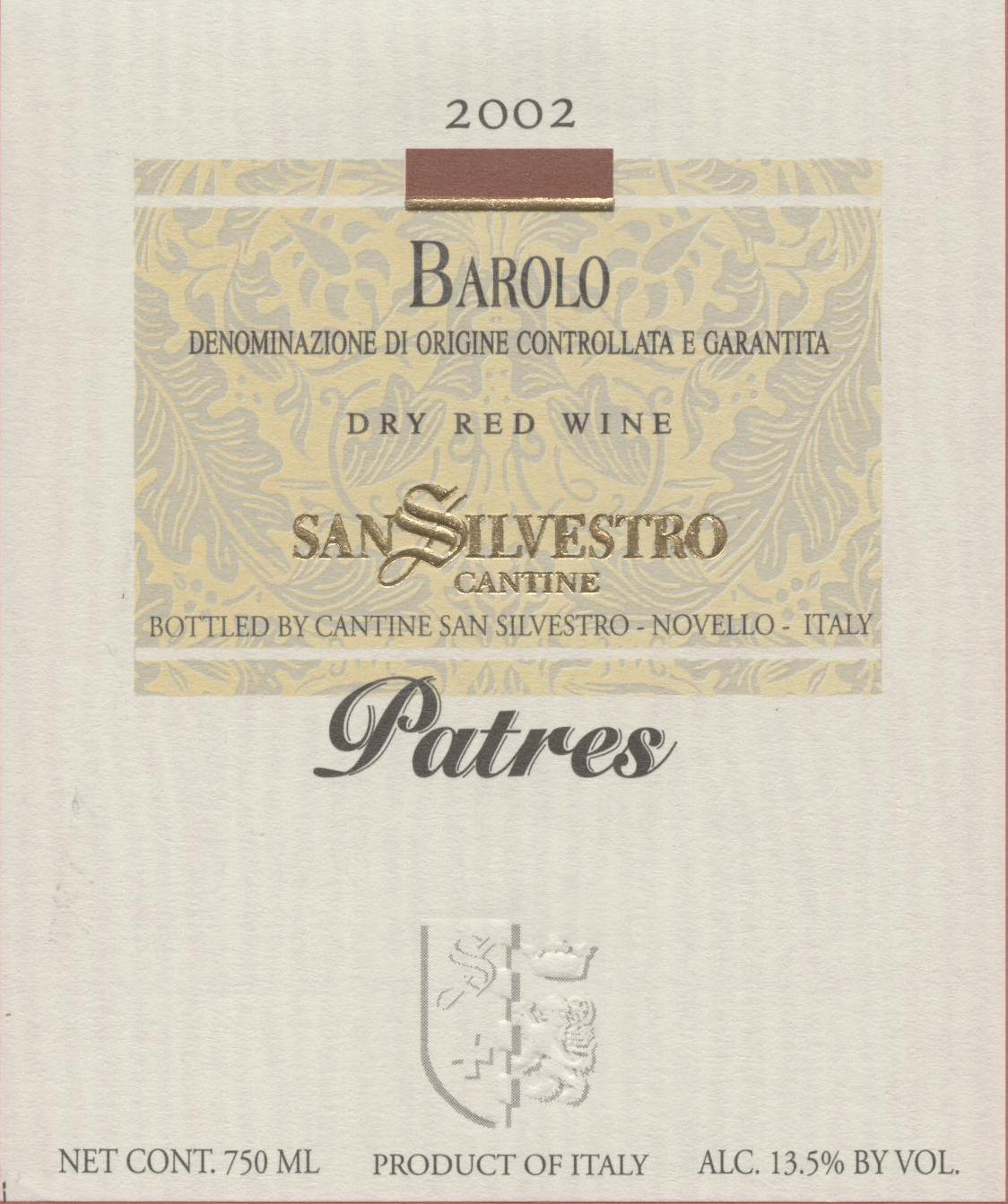2002 Barolo 100% Nebbiolo
San Silvestro Patres is a stunning representation of Barolo, showcasing the depth and complexity that the Nebbiolo grape can achieve. This exquisite wine offers a full-bodied experience, with a beautiful garnet hue that entices the eye. The acidity is pronounced, delivering a bright and lively character that balances the rich flavor profile beautifully. Fruit intensity is prominent, revealing layers of dark cherry, blackberry, and hints of plum, complemented by enticing notes of dried rose petals and earthy undertones. The tannins are firm and structured, providing a solid backbone while ensuring a smooth finish. As a dry red, this vintage from 2002 delivers an exceptional tasting experience, perfectly embodying the elegance and sophistication of the Barolo region.
San Silvestro Patres is a stunning representation of Barolo, showcasing the depth and complexity that the Nebbiolo grape can achieve. This exquisite wine offers a full-bodied experience, with a beautiful garnet hue that entices the eye. The acidity is pronounced, delivering a bright and lively character that balances the rich flavor profile beautifully. Fruit intensity is prominent, revealing layers of dark cherry, blackberry, and hints of plum, complemented by enticing notes of dried rose petals and earthy undertones. The tannins are firm and structured, providing a solid backbone while ensuring a smooth finish. As a dry red, this vintage from 2002 delivers an exceptional tasting experience, perfectly embodying the elegance and sophistication of the Barolo region.




